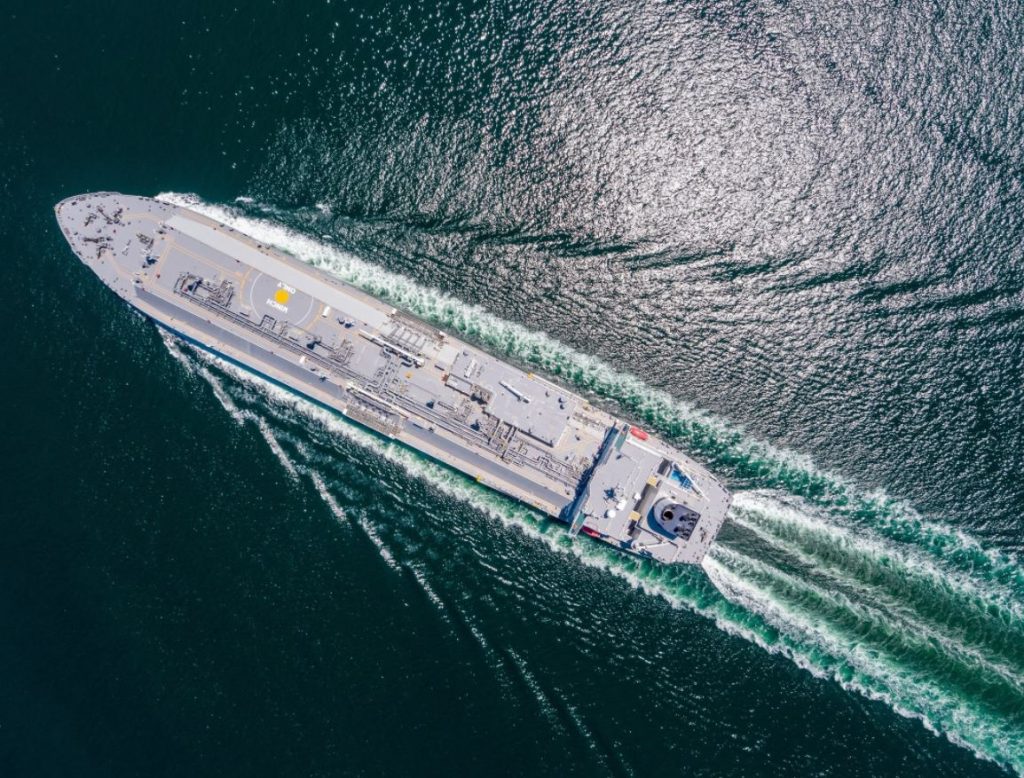Spot charter rates for the global liquefied natural gas (LNG) carrier fleet continued to decrease this week, while European prices increased for the second week in a row.
Last week, spot charter rates fell for the eighth consecutive week with the Atlantic rate dropping to $53,250 per day and the Pacific rate dropping to $55,000 per day.
“Freight rates continued to drop this week, with the Spark30S Atlantic decreasing by $500 (1 percent) to $52,750/day, whilst the Spark25S Pacific decreased by $1,750 (3 percent) to $53,250/day,” Qasim Afghan, Spark’s commercial analyst told LNG Prime on Friday.
“This is the tenth consecutive week LNG freight rates in both basins have dropped, but the lowest week-on-week decrease for this entire period, signaling a gradual levelling out of freight rates as the market has found some support from the Suez canal issues and from improved economics to send US LNG cargos to Asia,” he said.

LNG ships, including Qatari LNG shipments to Europe, are now favoring the Cape of Good Hope for safer passage.
Kpler said in a report earlier this week that the Suez Canal has witnessed no LNG transits since January 17.
“For an LNG carrier transiting from Qatar’s 77 Mtpa Ras Laffan liquefaction facility to NW Europe on a round-trip basis, Kpler’s latest model runs show there is a $0.2/MMBtu increase in freight cost via the Cape of Good Hope ($1.4/ MMBtu) compared to routing via the Suez Canal ($1.2/MMBtu),” the firm said.
This can largely be attributed to additional fuel and charter hire costs.
Vessels face an extra 21-day voyage time on a round-trip basis via the Cape of Good Hope as opposed to the Suez Canal, Kpler said.
European prices
In Europe, the SparkNWE DES LNG front month rose compared to the last week.
The NWE DES LNG for February delivery was assessed last week at $8.199/MMBtu and at a $0.62/MMBtu discount to the TTF.
“The SparkNWE DES LNG price for March delivery is assessed at $8.561/MMBtu and at a $0.64/MMBtu discount to the TTF,” Afghan said.
He said this is a $0.362/MMBtu increase in DES LNG price, marking the second consecutive week that SparkNWE has increased.
“The last time SparkNWE experienced consecutive week-on-week price increases was in September 2023,” Afghan said.

Levels of gas in storages in Europe remain high for this time of the year due to mild weather.
Data by Gas Infrastructure Europe (GIE) shows that gas storages in the EU were 70.17 percent full on January 31.
Asian demand
This week, JKM, the price for LNG cargoes delivered to Northeast Asia rose slightly when compared to the last week, according to Platts data.
JKM for March settled at $9.460/MMBtu on Thursday.
Platts, part of S&P Global Commodity Insights, said in a report on Thursday that geopolitical risks leading to tightness in shipping availability and firm LNG and natural gas demand in South Asia are supporting prices of South Asian cargoes, prompting a narrower spread between JKM and West Indian Marker (WIM).
Platts assessed the March WIM, the price for LNG cargoes delivered to West India ports, at $9.488/MMBtu on February 1, or at a 22.8 cents/MMBtu discount to the March JKM.
The JKM/WIM spread had been in a persistently narrowing trend starting early January, as global LNG prices eased due to weak demand for LNG in the key consuming regions of Northeast Asia and Europe, Platts said.
State-run Japan Organization for Metals and Energy Security (JOGMEC) said in a report earlier this week that demand remains weak across Asia, but some buyers purchased LNG cargoes due to low prices.
“Demand remains weak with high inventory levels across Northeast Asia, although daily price declines have stimulated buying interest from China, India, Thailand, and other Asian countries,” JOGMEC said.

